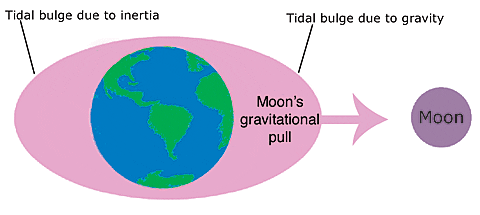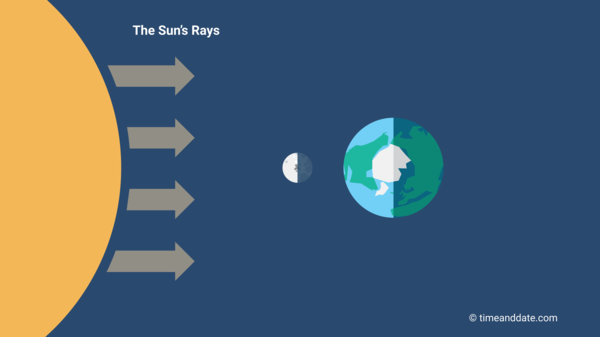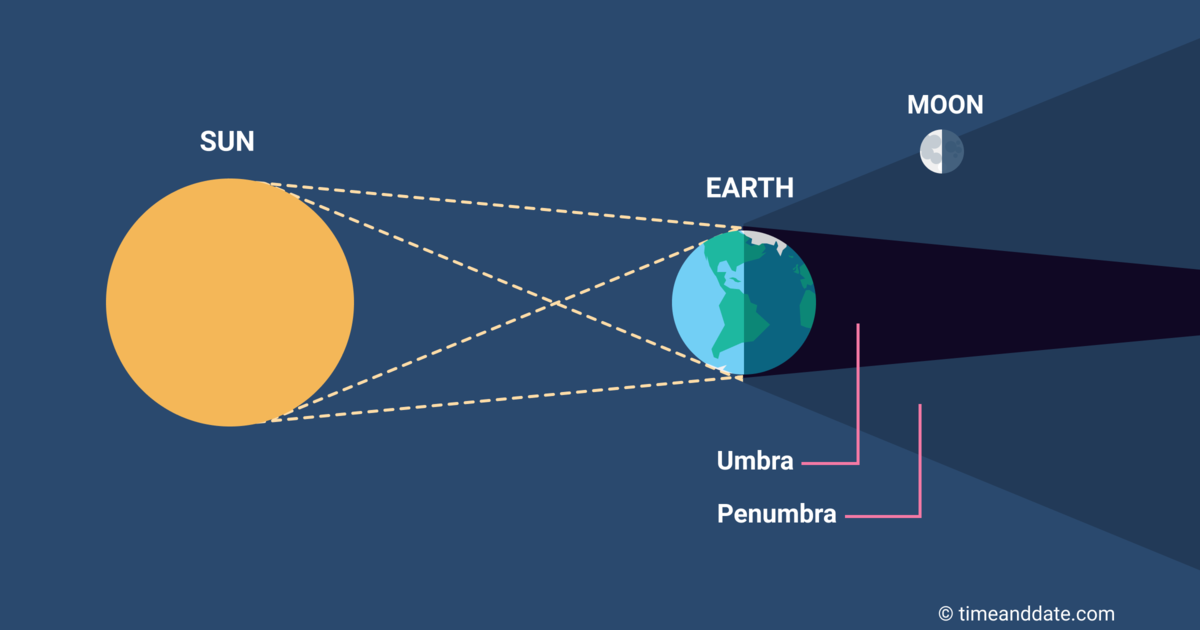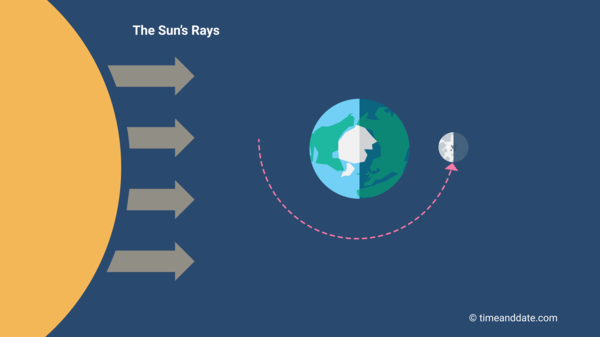What movement of the earth creates a day? A year?
Rotation, Revolution (orbit)
Is the same amount of the moon always illuminated by the sun?
YES! Half of the moon is always lit up by the sun. We can only see different amounts of the lit up half of the moon as it orbits the Earth.
What color is sunlight from the sun?
White
What is an eclipse?
When one object or body in space casts a shadow on another object in space.
The apparent change in local sea levels
What is the reason for the seasons?
Earth is tilted on its axis. When the sun is tilted towards the sun, the northern hemisphere experiences summer. When we are tilted away from the sun, we experience winter.
What side of the moon appears illuminated when it is waxing?
The right side
White light is made up of how many different colors?
7
When the moon passes directly in front go the sun and casts a shadow on Earth we see a...?
Solar eclipse
Why do tides occur?
Tides occur because of the moons gravitational pull on Earth's oceans.
Is the light energy from the Sun more, less, or the same in January vs December?
The same
What side of the moon appears illuminated when it is waning?
The left side
Define refraction, transmission, reflection, scattering, and absorption
Refraction: when light bends as it passes through a medium
Transmission: Light passes straight through a medium
Reflection: Light bounces off of a surface
Scattering: A small particle reflects light in all directions
Absorption: some light is transferred to a new form of energy (ex. heat)
When the Earth passes in front of the moon and casts a shadow on the moon we see a?
Lunar eclipse
Why do we have 2 high tides and two low tides a day?
There are two tidal bulges caused by the moons gravity and inertia, as the Earth rotates on its axis, every location on Earth will pass through those two bulges and two low tides. 
What is solar elevation and why does it matter?
Solar elevation is the apparent height of the Sun in the sky. When solar elevation is higher, the sunlight that area receives is more direct (the energy from the Sun is concentrated in a smaller area), and heats up the Earth more. In the Winter, solar elevation is lower, sunlight is less direct (energy from the Sun is spread over a larger area, and the Earth heats up less.
When the moon is between the sun and earth, what moon base do we see? 
New moon
Why does the sky appear blue?
The blue wavelengths of light scatter off of particles in our atmosphere, making those particles appear blue.
There are two shadows cast during an eclipse. What are they called? What makes them different?
Penumbra: The larger, lighter shadow cast is the penumbra.
Umbra: The darker, smaller shadow cast is called the umbra. 
When are tides the highest (hint: spring tides)
When the sun, moon, and earth are all in line.
How long is earths rotation?
24 hours
When the earth is between the sun and the moon, which moon phase is it? 
Full moon
Why does the sky appear to be red and orange at sunset?
The sun has to travel through more of the atmosphere at sunrise and sunset. During mid day, the only wavelengths that are scattered are bluer hues, but at sun rise and sun set some of the longer wavelengths begin to scatter as well.
What type of eclipse do we see during a full moon?
Lunar eclipse.
o0What position do the Sun, moon, and Earth, need to be in in order for us to experience a neap tide? (hint: neap=?o)
The moon must be at a right angle from the sun (90o). The moon phases associated with neap tides are quarter moons. Gravity from the sun is working against the gravity from the moon, creating lower high tides and higher low tides.